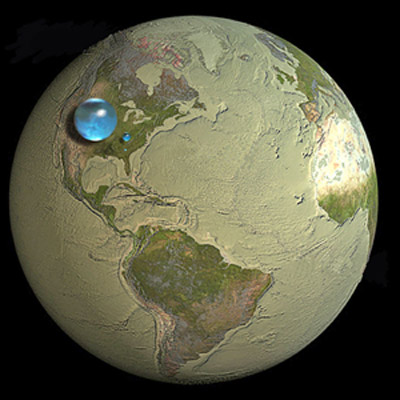We think of Earth as the water planet. But what if you could take all of the water on Earth and form it into a sphere, or bubble? How big would the bubble be? The U.S. Geological Survey (USGS) has the answer. All the water on Earth would fit into a sphere 860 miles (1,385 km) wide. That’s a lot smaller than Earth itself, as the drawing below shows.

Surprised? Water planet, you said? In fact, there’s a lot of water in the large blue sphere depicted above. The largest sphere – representing all water on, in, and above Earth – would be about 860 miles (about 1,385 kilometers) in diameter. That’s in contrast to about 8,000 miles (about 12.5 thousand kilometers) for Earth.
Or to put it another way, the largest blue sphere above holds 332,500,000 cubic miles (or 1,386,000,000 cubic kilometers (km3) water. We writers are always looking for analogies, but the best one I can think of to describe this amount is … well, it’s about as much as all the water on Earth.
See the smaller sphere over Kentucky? It represents Earth’s liquid fresh water in groundwater, swamp water, rivers, and lakes.

And do you see the even smaller (very tiny) bubble over Atlanta, Georgia? That one represents fresh water in all the lakes and rivers on the planet. USGS says that most of the water people and other earthly life require every day comes from these surface-water sources.
Bottom line: USGS says that all the water on Earth would fit into a sphere 860 miles (1,385 km) wide.
No comments:
Post a Comment